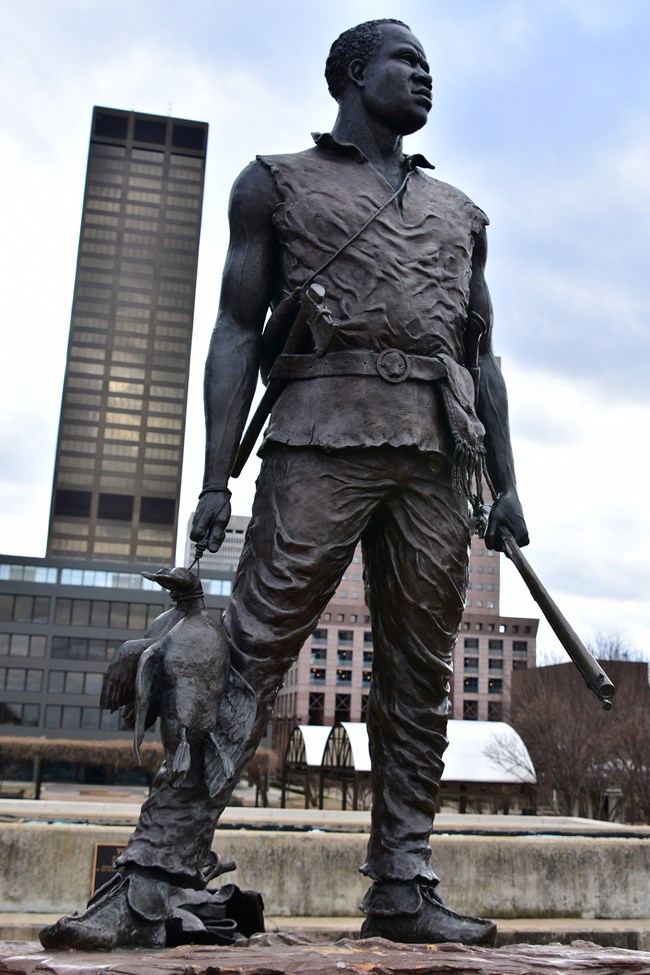Last updated: September 11, 2018
Article
York

Photo: Creative Commons/Don Sniegowski
Yet, after the expedition ended, life really didn’t change for York. When Clark traveled back to St. Louis in 1807 to take up duties as chief Indian agent for the Territory of Upper Louisiana, York returned with him. However, clearly a rift developed between the two men: York had wanted to remain in Kentucky, near his wife, whom he hadn’t seen in almost five years. He also petitioned Clark for his freedom—perhaps thinking of the double pay and 320 acres the other men received for their services on the Expedition. These requests struck Clark as presumptuous coming from a slave.
Clark eventually allowed York to return to Kentucky in 1808 for a short visit. But Clark wrote to his brother Jonathan: “If any attempt is made by york to run off, or refuse to provorm his duty as a Slave, I wish him Sent to New Orleans and Sold, or hired out to Some Severe master untill he thinks better of Such Conduct.”
In a letter to his brother dated a few months later, Clark wrote: “I did wish to do well by him—but as he has got Such a notion about freedom and his emence Services, that I do not expect he will be of much Service to me again; I do not think with him, that his Services has been So great (or my Situation would promit me to liberate him).”
York returned to St. Louis in early 1809, but Clark still viewed him unfavorably. “He is here but of verry little Service to me,” Clark wrote to Jonathan. ”[York is] insolent and Sulky, I gave him a Severe trouncing the other Day and he has much mended Sence.”
The last mention of York in William Clark’s letters appears in August 1809. Clark was so displeased with him that he determined to hire him out or sell him. John O’Fallon, Clark’s nephew, wrote in 1811: “The term for which [York] was hired to Mr. Young yesterday expired but I believe agreable to request Mr. Fitzhugh has again hired him to a Mr. Mitchell living about seven miles from this place...” O’Fallon further notes that York’s wife had moved with her master and the rest of his household to Mississippi; it is unlikely that York and his wife saw each other again. Ten years after the expedition’s end, York was still enslaved, working as a wagoner for the Clark family.
In 1832, writer Washington Irving interviewed Clark and asked of York’s fate. Clark replied that he had finally freed York and said, astonishingly, that his former slave wasn’t happy with his freedom and tried to return to Clark—dying of cholera along the way.
But did he? In 1832, fur trader Zenas Leonard, visiting a Crow village in north-central Wyoming, “found a Negro man, who informed us that he first came to this country with Lewis and Clark—with whom he also returned to the state of Missouri, and in a few years returned again with a Mr. Mackinney, a trader on the Missouri river, and has remained here ever since—which is about ten or twelve years.”
On January 17, 2001, President Clinton promoted York posthumously to the rank of honorary sergeant, Regular Army.
